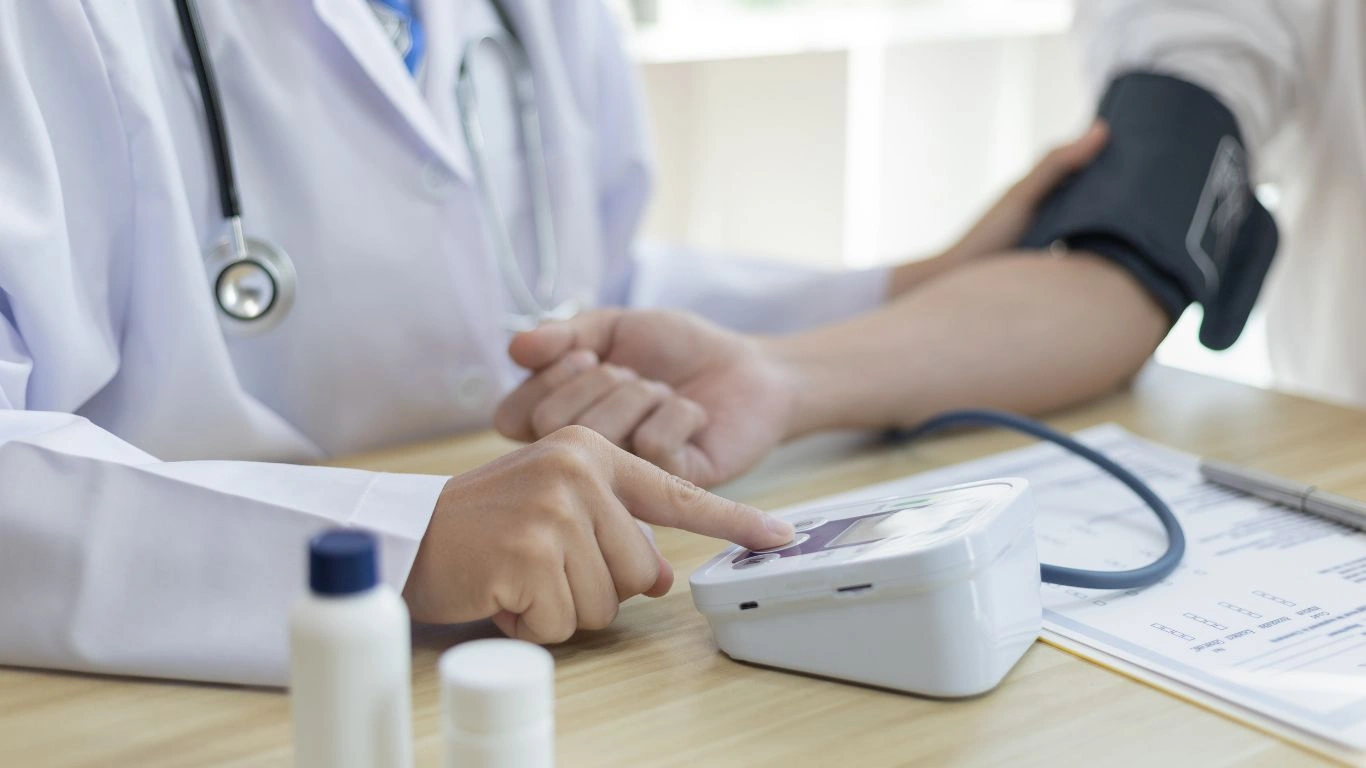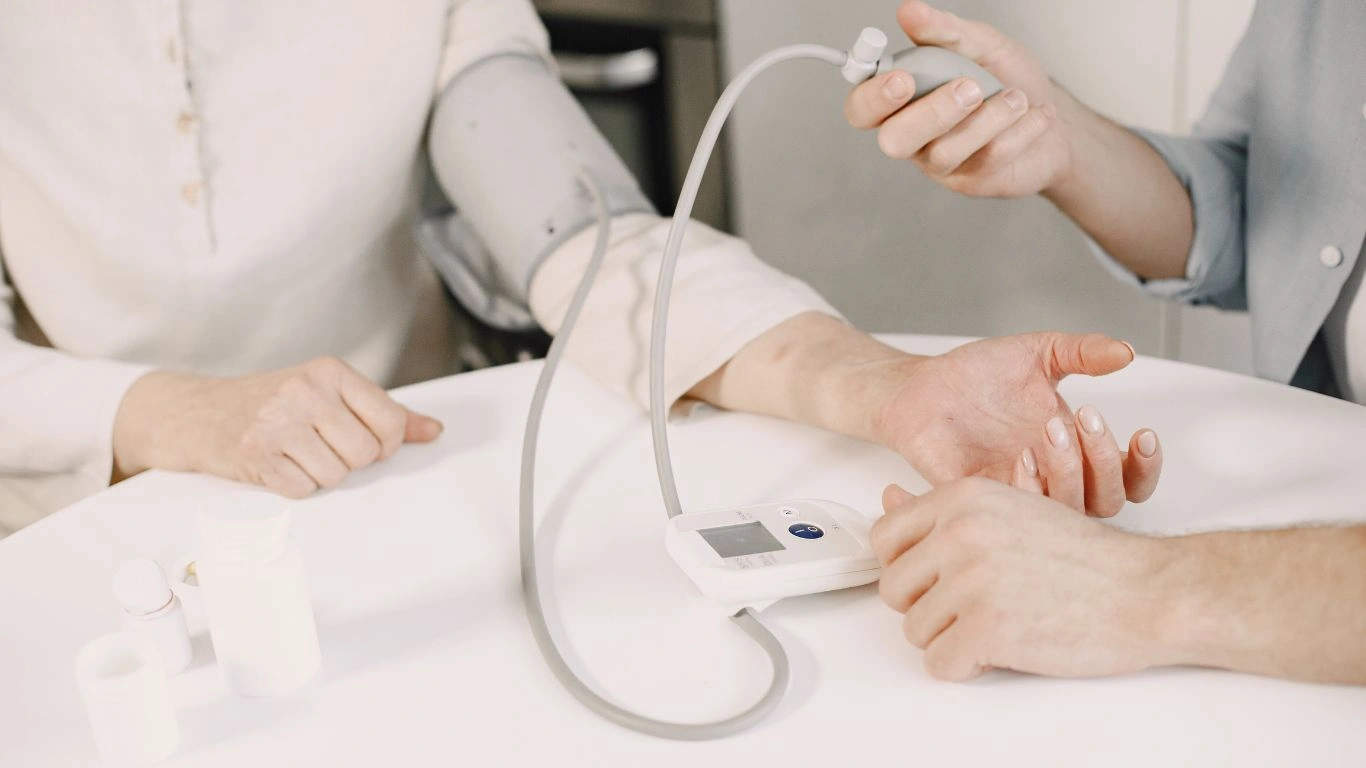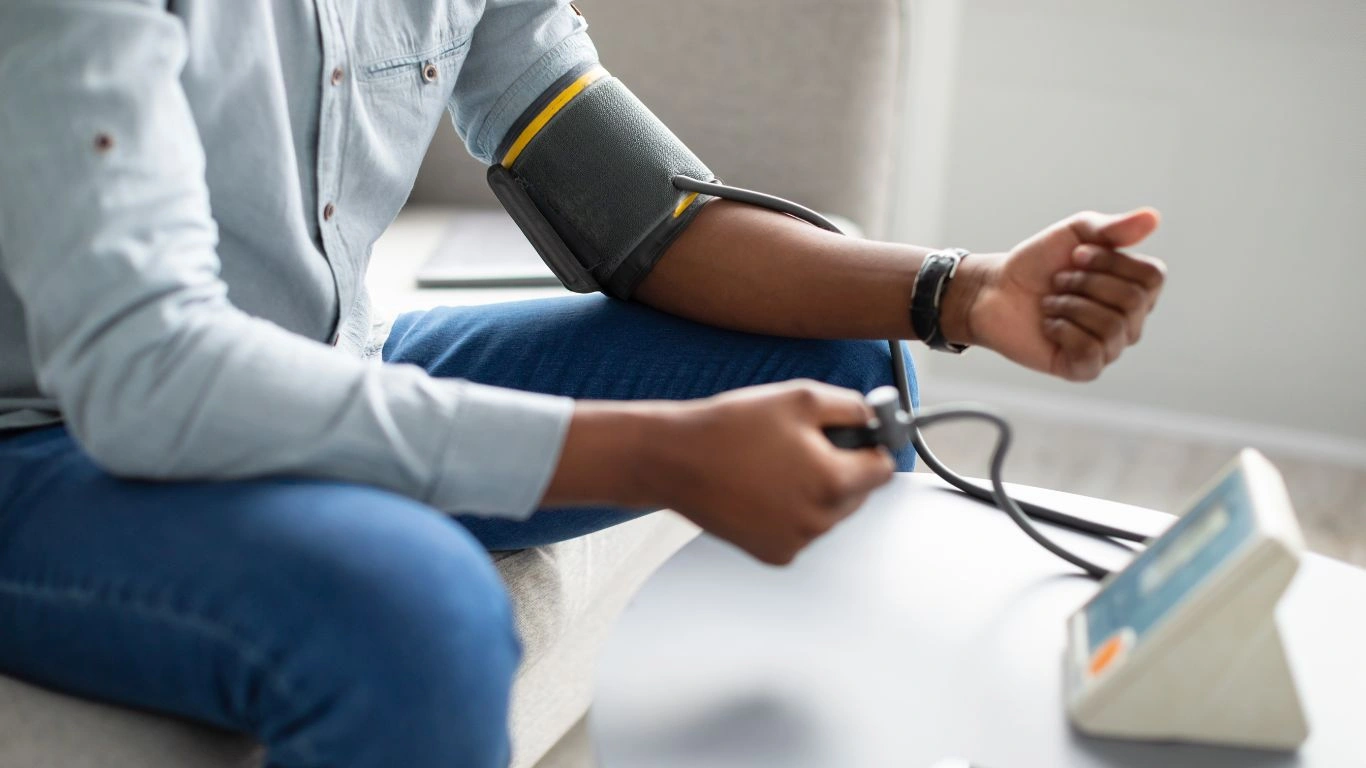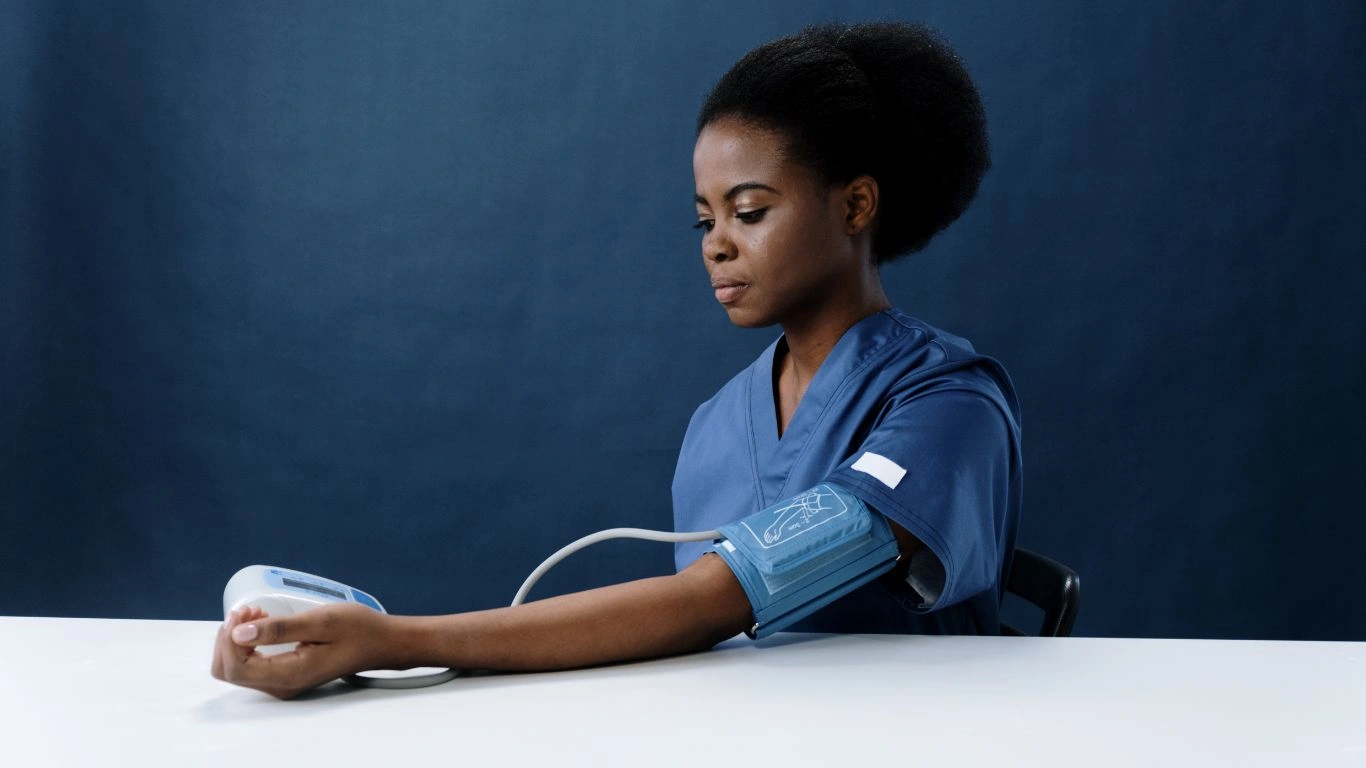How to Breathe During Blood Pressure Check for Accurate Results
If you’ve ever been nervous about getting your blood pressure checked, you’re not alone. One of the most common questions I get from my patients as an Internal Medicine Physician specializing in hypertension management is how to breathe during blood pressure check. It might sound like a small detail, but the way you breathe can actually impact your reading significantly. From my experience, a calm and steady breath can make a noticeable difference—not only in accuracy but also in easing the anxiety that often creeps up in the doctor’s office. So, let’s talk about why breathing matters, what you should actually do, and some simple tips to get you more comfortable during that moment.
Why Breathing Matters When Checking Your Blood Pressure

When your blood pressure is being measured, the goal is to capture a true snapshot of your heart’s work. But if you’re holding your breath, breathing too fast, or feeling tense, that snapshot can be distorted. Your body responds to stress by releasing adrenaline, which raises blood pressure temporarily—something I’ve seen countless times in my clinic. This is why sometimes patients have readings that seem much higher than their usual numbers.
Breathing properly helps your body relax, reducing that adrenaline surge and giving the cuff a fair chance at an accurate measurement. Plus, when you focus on your breathing, it helps calm your mind, making the whole process less stressful.
What Happens to Your Blood Pressure When You Breathe Incorrectly?
There are a few common breathing mistakes people make during a blood pressure check that can skew the results:
- Holding your breath: This causes your chest muscles to tense, raising your blood pressure temporarily.
- Rapid, shallow breaths: This can trigger a sympathetic nervous system response (think “fight or flight”), which also spikes your blood pressure.
- Talking or moving: Although not strictly breathing-related, talking while the cuff is on often disrupts your natural breathing rhythm, causing higher readings.
In my practice, I’ve seen patients who, after simply being coached to breathe slowly and steadily, get readings that are much closer to their normal baseline. It’s a game-changer for those anxious moments.
How to Breathe During Blood Pressure Check: Simple Steps That Work

So, what exactly should you do? Here’s a straightforward approach I recommend every patient follow when they sit down for a blood pressure check:
- Sit comfortably: Plant your feet flat on the floor, keep your back supported, and rest your arm at heart level.
- Take a few deep breaths before the cuff goes on. Inhale slowly through your nose for about 4 seconds, hold for a second, then exhale gently through your mouth for about 6 seconds.
- Keep breathing slowly and evenly during the reading. Focus on letting your belly rise and fall rather than shallow chest breathing.
- Stay silent and still—avoid talking or moving, which can interrupt your breathing rhythm.
In fact, I often walk my patients through this breathing exercise right before taking their measurement, and many tell me it helps not just with the reading, but also calms them down overall. Think of it as a mini relaxation practice.
Why Belly Breathing is Your Best Friend Here
Belly breathing, or diaphragmatic breathing, is a natural, relaxed way to breathe that engages your diaphragm rather than your chest. It’s something we do instinctively when we’re calm or asleep, but stress tends to push us into shallow chest breathing. For blood pressure checks, belly breathing helps:
- Lower your heart rate, which can help reduce your blood pressure.
- Relax your muscles, including those around your arteries, making it easier to get an accurate reading.
- Shift your nervous system from “fight or flight” mode to “rest and digest.”
From years of guiding patients, I can confidently say that belly breathing isn’t just a “nice to have” during a blood pressure check—it’s often the secret ingredient to getting a reliable, stress-free reading.
When to Practice Breathing Beyond the Clinic

While this breathing technique is critical during the blood pressure check itself, it’s also helpful as a daily habit if you’re managing hypertension. Regular deep breathing exercises can help lower your baseline blood pressure, reduce anxiety, and improve overall heart health.
Personally, I encourage patients to try 5 minutes of deep belly breathing twice a day. It’s a simple, drug-free way to support your cardiovascular system. If you’re wondering how this ties back to blood pressure readings, think of it as training your body to stay calm and steady—not just when you’re in the doctor’s office, but all day long.
Common Questions About Breathing and Blood Pressure Checks

Now that we’ve covered how to breathe during blood pressure check and why it matters, let’s address some of the common questions I hear from patients during my hypertension consultations. These little clarifications can really help make the process smoother and less intimidating.
Is It Better to Hold Your Breath During the Reading?
This is one of the biggest myths out there. From my years of experience, holding your breath is actually counterproductive. It tends to make your blood pressure spike temporarily, giving a falsely high reading. When you hold your breath, your chest muscles tighten, and your heart rate may increase, which isn’t what we want. Instead, keep breathing calmly and steadily. I tell patients to think of their breath like a gentle wave—steady and rhythmic.
Should I Breathe Faster or Slower?
Slower is definitely better. Rapid or shallow breathing sends your body a signal that you’re stressed or in danger, which can cause your blood vessels to constrict and your blood pressure to rise. On the other hand, slow, deep breaths activate your parasympathetic nervous system—the part responsible for calming you down. In my clinic, I often demonstrate this by having patients practice a few slow breaths before the cuff goes on, and the difference is almost always noticeable.
Can Breathing Techniques Replace Medication?
While breathing exercises are fantastic for supporting blood pressure management, I want to be clear: they’re not a replacement for medication if your doctor has prescribed it. However, incorporating mindful breathing as a daily practice can enhance the effects of medication, reduce stress-related spikes, and improve your overall heart health. Many of my patients report feeling more in control of their hypertension after learning to manage stress through breathwork, but medication remains a crucial component for many.
How Anxiety Affects Your Blood Pressure Reading—and What to Do About It

One of the biggest challenges during blood pressure measurement is anxiety, often called “white coat syndrome.” I’ve seen it countless times: patients walk into the clinic feeling perfectly fine, but the moment the cuff goes on, their blood pressure spikes. This reaction is natural—our bodies are wired to respond to stress—but it can make it tough to get accurate readings.
Breathing properly during the measurement is your best tool against this anxiety. Focusing on slow, deep breaths helps calm your nervous system, making it easier to get a true reading. In some cases, I ask patients to practice breathing exercises for a few minutes before the check or even step outside for a short walk to relax before sitting down.
Here’s a quick breathing exercise I often recommend right before taking a reading:
- Close your eyes and breathe in slowly through your nose for 4 seconds.
- Hold that breath gently for 2 seconds.
- Exhale slowly through your mouth for 6 seconds.
- Repeat this 3-5 times until you feel calmer.
This simple routine can lower your heart rate and relax your muscles, reducing the chances of an anxiety-related spike. Trust me, it’s a small change with a big impact.
Tips to Prepare for a Blood Pressure Check at Home or Clinic

Whether you’re checking your blood pressure at home or visiting your doctor, preparation can make a world of difference in getting an accurate reading. Here are some practical tips I share with my patients to keep in mind:
- Rest for 5 minutes before measurement: Sitting quietly before the reading helps your body settle down.
- Avoid caffeine, smoking, or exercise: Do not consume caffeine, smoke, or do vigorous exercise for at least 30 minutes prior to your check.
- Use the restroom: A full bladder can raise blood pressure temporarily, so make sure to go before the measurement.
- Wear loose clothing: Tight sleeves can interfere with cuff placement and accuracy.
- Position your arm correctly: Rest your arm on a table or armrest at heart level.
- Practice calm breathing: Remember those slow, steady breaths we talked about? Use them right before and during the reading.
I’ve noticed that patients who follow these simple steps get readings that better reflect their true blood pressure, which helps guide treatment decisions more effectively.
Why Multiple Readings Matter
One measurement doesn’t tell the whole story. Blood pressure can fluctuate throughout the day based on many factors—activity, stress, even the weather. That’s why I often ask patients to take multiple readings over several days or weeks, especially if they’re monitoring at home.
When you’re measuring at home, try to maintain consistent conditions: same time of day, same arm, and after resting quietly. Always breathe calmly and avoid talking during the reading. Over time, this habit gives a clearer picture of your heart health than a single snapshot taken at the clinic.
By understanding how to breathe during blood pressure check and why it matters, you’re taking a powerful step toward better health management. In the next section, we’ll explore some advanced breathing techniques and other lifestyle tips to help keep your blood pressure in check naturally.
Advanced Breathing Techniques to Support Blood Pressure Control

By now, you’re probably getting the hang of the basics—how to breathe during blood pressure check and why it makes such a difference. But if you want to take it a step further, there are some advanced breathing techniques that I often introduce to patients who want to actively manage their hypertension beyond just the doctor’s visit.
One technique I particularly like is called paced breathing. It’s all about slowing your breath to a consistent rhythm, usually around 5 to 6 breaths per minute. This slow pace encourages your heart rate to synchronize with your breathing, which can help lower blood pressure and reduce stress. I usually guide patients to practice this for 10 minutes a day, especially during moments when they feel anxious or before a blood pressure check.
Here’s a quick way to try paced breathing at home:
- Sit or lie down comfortably with your back supported.
- Inhale slowly through your nose for about 5 seconds.
- Exhale gently through your mouth for about 5 seconds.
- Continue this rhythm for 10 minutes, focusing on making each breath smooth and relaxed.
I’ve seen firsthand how patients who stick to this routine report feeling less “on edge” and often notice lower readings at their follow-ups. It’s a small habit that can build into big benefits.
Meditation and Mindfulness Breathing
Beyond just counting breaths, integrating mindfulness into your breathing can amplify the calming effects. Mindfulness means paying full attention to the present moment without judgment. When combined with breathing, it helps interrupt stress cycles that might otherwise cause blood pressure to spike.
During my clinical years, I noticed a pattern: patients who practiced mindfulness breathing regularly had fewer stress-induced blood pressure surges. It doesn’t require fancy equipment or hours of time—just a few minutes daily. Apps and guided videos can be great tools if you’re new to this.
Lifestyle Habits That Complement Proper Breathing for Blood Pressure

Breathing is a powerful tool, but it works best as part of a larger lifestyle strategy. Here are some key habits I emphasize to patients managing hypertension:
- Regular physical activity: Exercise supports heart health and improves how your body handles stress.
- Balanced diet: Eating plenty of fruits, veggies, whole grains, and lean proteins helps keep blood pressure in check.
- Limiting salt and alcohol: Both can cause your blood pressure to rise if consumed in excess.
- Good sleep hygiene: Poor sleep is linked with higher blood pressure and greater stress.
- Weight management: Maintaining a healthy weight reduces strain on your heart and arteries.
- Stress reduction techniques: Along with breathing exercises, yoga, tai chi, or even hobbies you enjoy can keep your mind and body balanced.
From my clinical perspective, when patients combine these habits with mindful breathing during blood pressure checks, their overall control improves dramatically. It’s a team effort between you and your lifestyle choices.
When to Talk to Your Doctor About Your Blood Pressure
Even with the best breathing techniques and lifestyle changes, some people still need medication or closer monitoring. If you notice your readings are consistently high, or you experience symptoms like headaches, dizziness, or chest discomfort, it’s important to see your healthcare provider.
I always tell patients: don’t rely solely on home readings or breathing tricks—your doctor’s guidance is essential. We’re here to help tailor treatments and make sure you stay on the right track.
Final Thoughts on Breathing and Blood Pressure Monitoring
Learning how to breathe during blood pressure check isn’t just about the reading—it’s about empowering you to take charge of your health. Breathing right calms your nervous system, improves measurement accuracy, and reduces stress-induced spikes that could confuse your treatment plan. Over the years, I’ve seen countless patients transform their experience with simple breath awareness, turning a stressful moment into an opportunity to relax.
Remember, these strategies are tools in your toolbox—not cures on their own. Paired with regular medical care, medication when needed, and healthy habits, mindful breathing can make a real difference in your journey with hypertension.
References
- American Heart Association
- American Heart Association Journals
- American Gastroenterological Association (for overall health context)
- National Heart, Lung, and Blood Institute
Disclaimer
This article is intended for educational purposes only and does not replace professional medical advice, diagnosis, or treatment. Always consult your healthcare provider before making any changes to your blood pressure management plan or starting new breathing exercises, especially if you have underlying health conditions.

Dr. Gwenna Aazee is a board-certified Internal Medicine Physician with a special focus on hypertension management, chronic disease prevention, and patient education. With years of experience in both clinical practice and medical writing, she’s passionate about turning evidence-based medicine into accessible, actionable advice. Through her work at Healthusias.com, Dr. Aazee empowers readers to take charge of their health with confidence and clarity. Off the clock, she enjoys deep dives into nutrition research, long walks with her rescue pup, and simplifying medical jargon one article at a time.






